16 Ways Email Segmentation Can Boost Subscriber Engagement + 4 Bonus Ecommerce Segments
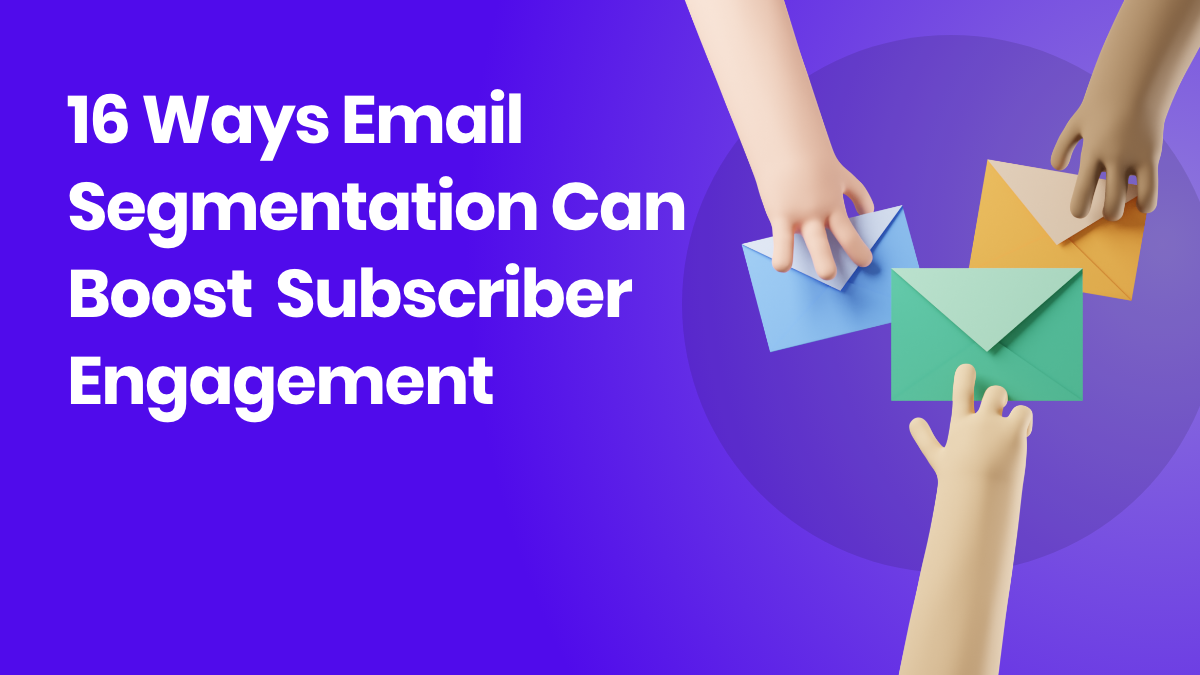
What is email segmentation and why is important?
Segmentation happens everywhere. YouTube and Netflix suggest videos or shows based on your past viewing behavior. Amazon suggests products related to past purchases, searches, or products in your cart. It’s actually quite simple. Send people what they want and they are more likely to act. The same is true with email segmentation. When you segment your email marketing, you’ll see:- Higher open rates
- Higher click-through rates
- Higher deliverability rates
- Higher conversion rates
- More sales
16 ways to segment your email list and send targeted emails
Here are 16 ways you can easily use subscriber segmentation now or start preparing your list for when you’re ready to start sending segmented emails.1. Send different emails based on subscribers’ skill level.
Educational email courses are a perfect way to teach others and incentivize them to subscribe to your email list. To create this experience for people of varying skill levels, you can create beginner, intermediate, and expert versions of your course. When subscribers sign up and select their skill level, you can automatically tag them and send them the right course tailored to their needs.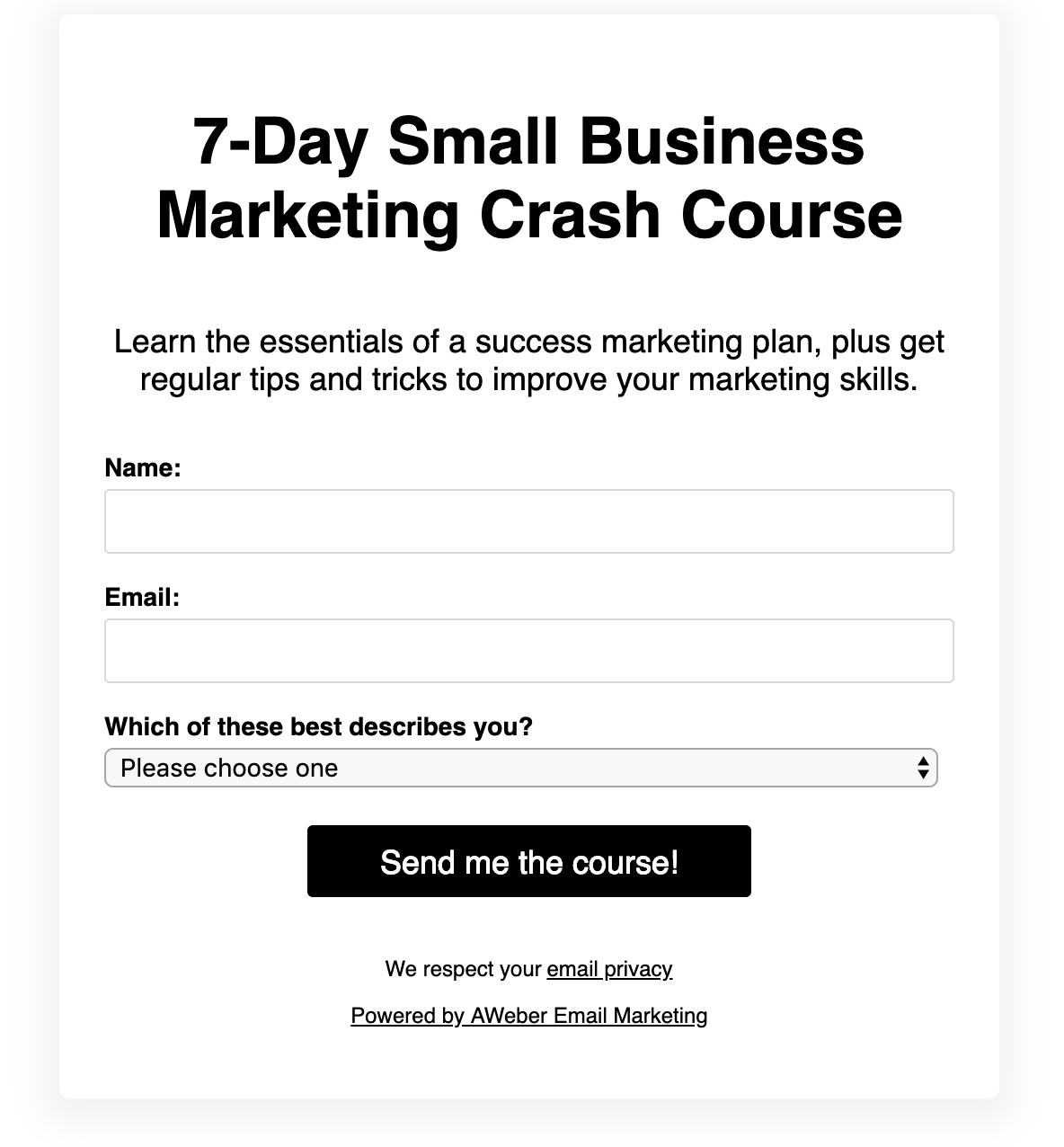 As subscribers complete the courses, you can create segments based on their skill level and send them emails to invite them to the next course based on their level of expertise. In addition to a course, you can also use knowledge of your subscribers’ skill levels in other ways, like inviting them to a webinar or sending them videos and resources based on their needs.
As subscribers complete the courses, you can create segments based on their skill level and send them emails to invite them to the next course based on their level of expertise. In addition to a course, you can also use knowledge of your subscribers’ skill levels in other ways, like inviting them to a webinar or sending them videos and resources based on their needs.
2. Send different emails based on your subscribers’ interests.
If you send emails that cover a variety of topics, it may be helpful to learn what your subscribers are most interested in. Doing this will allow you to send targeted emails to segments who are more likely to engage with your content. Gather this information when a subscriber signs up. Simply ask them what topics they’re interested in learning about, and tag them based on their selections. Then create segments of subscribers with those particular tags, or a combination of tags.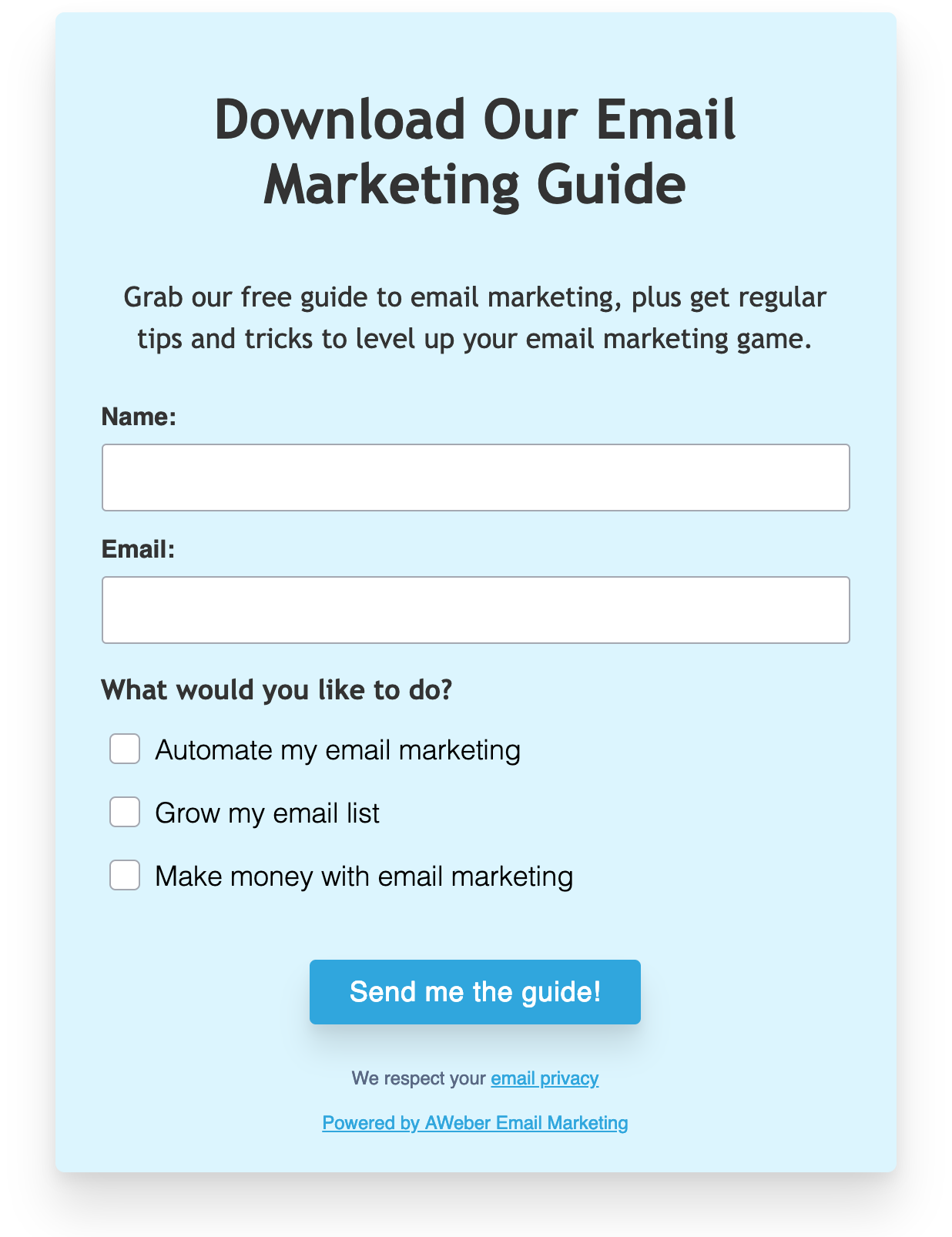 You can also gather this information when subscribers click on links in your emails. If you send out an email about a new vegan recipe, you can tag subscribers with the word “vegan” when they click the link for the recipe.
You can also gather this information when subscribers click on links in your emails. If you send out an email about a new vegan recipe, you can tag subscribers with the word “vegan” when they click the link for the recipe.
3. Send emails with a gift based on subscribers’ birth month.
Most people love receiving birthday wishes. Send your subscribers a birthday gift or incentive during their birth month. On your sign up form, ask subscribers to choose their birth month and set up custom fields to apply a tag based on their selection. Each month, send an email with a birthday gift to the corresponding group of tagged subscribers.4. Send emails in subscribers’ native language.
If you have subscribers from different countries around the world, you might assume that their native language is different from your own. As a result, you can segment these subscribers and send emails in their preferred language. Whether you segment and tag subscribers based on their geographic location or ask them for their language preference in the sign up form, you can easily deliver content that’s accessible to everyone.5. Send emails based on subscribers’ geographic locations.
Run events in different locations? Have an ecommerce shop with a global customer base? By segmenting subscribers based on their geographic location, you can send contextual emails with content, like upcoming events near them and exclusive discounts for local holidays or seasons. Or share advice and news that would be more relevant to that particular audience.
6. Send contextual welcome campaigns based on different incentives, sign up forms, or landing pages.
Do you offer multiple incentives on different sign up forms or landing pages? Make sure your subscribers get welcome emails that relate to the incentive for which they signed up. Apply unique tags to subscribers who sign up to deliver the right incentive to the right person, and create a more personalized email campaign.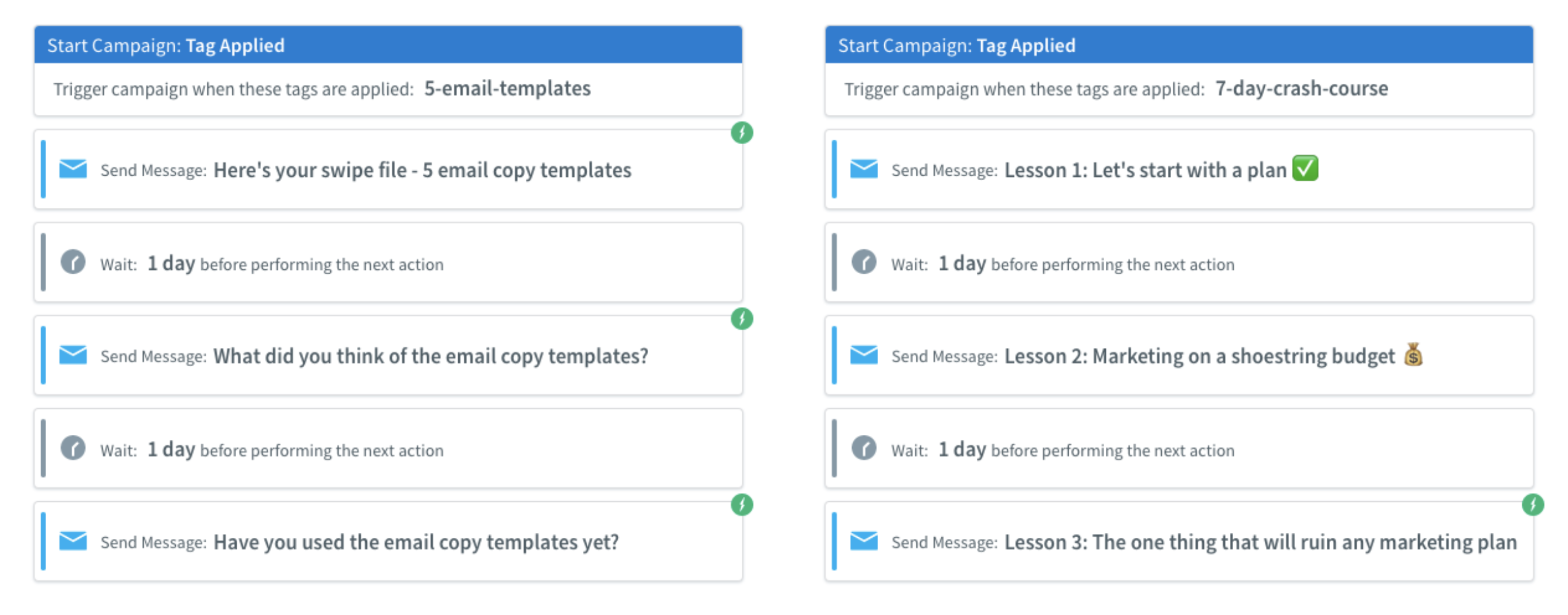
7. Send an email based on the incentive for which a subscriber signed up.
In addition to sending contextual welcome campaigns to subscribers based on what they signed up for, you can also send targeted broadcasts with content that relates to the incentive. Since you already know they’re interested in a specific topic, you can continue sending them targeted content they’ll enjoy.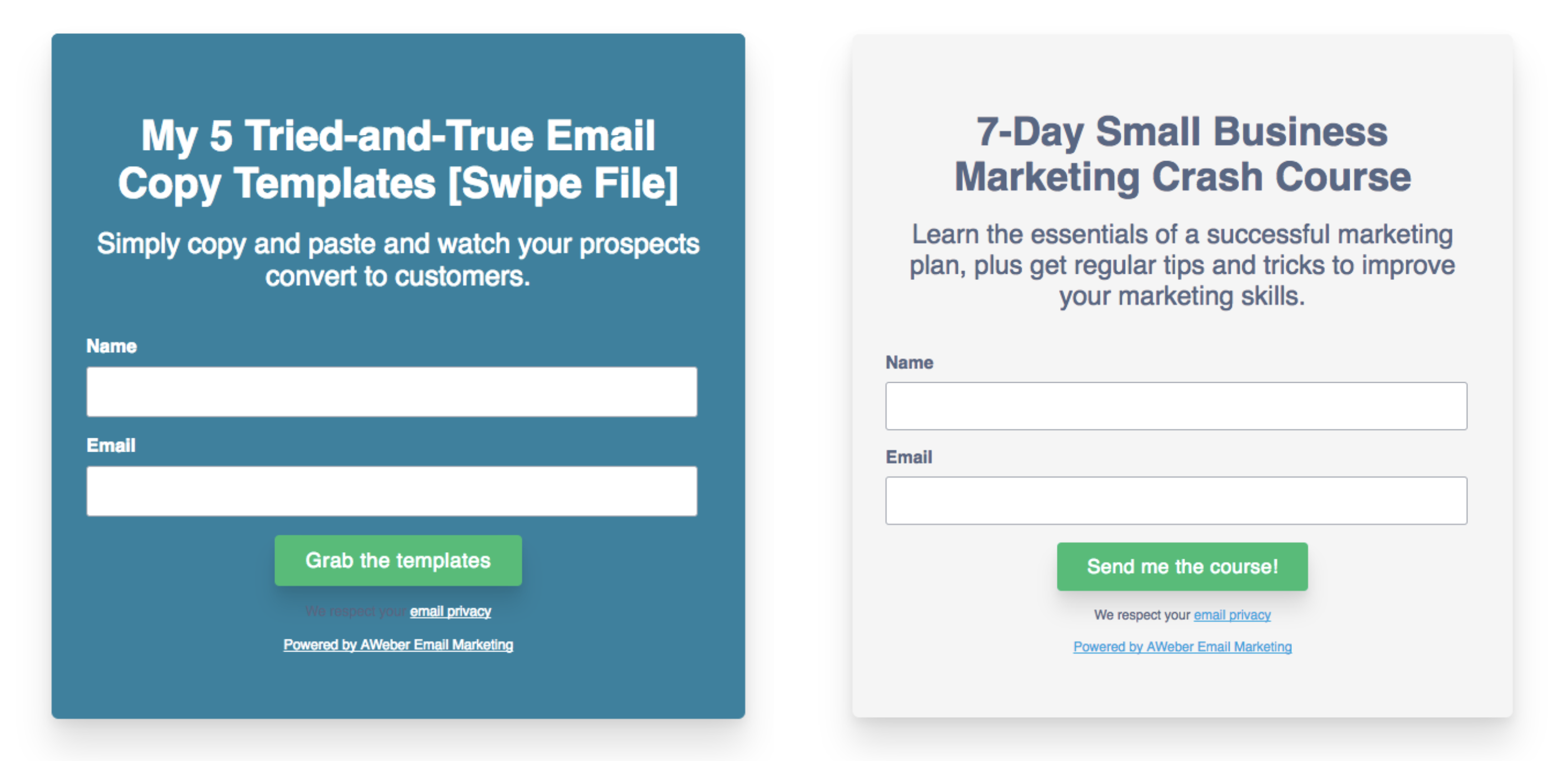
8. Send win-back (or re-engagement) emails to inactive subscribers.
People sign up to your email list for all sorts of reasons, so it’s normal that some become inactive over time. But when you continue to send emails to unengaged subscribers, you’re only hurting your email performance and deliverability. If you have subscribers who haven’t engaged with your emails in a long time, try to win them back and get them engaged with a targeted broadcast or automated campaign. In your email, explain what they’re missing out on and offer exclusive discounts and incentives to get them to take action. If they click the incentive, keep them on your email list. And if they don’t, simply unsubscribe or remove them. A smaller, more engaged list is generally better than a larger, unengaged list.
In your email, explain what they’re missing out on and offer exclusive discounts and incentives to get them to take action. If they click the incentive, keep them on your email list. And if they don’t, simply unsubscribe or remove them. A smaller, more engaged list is generally better than a larger, unengaged list.
9. Send a second email or trigger a campaign to subscribers who opened the first email, but didn’t click a link.
Notice a low click-through rate in your previous email? Create a segment of subscribers who opened your message, but didn’t click. Then send them a second email to encourage them to click through. Consider how you might be able to make the message more appealing for this segment of subscribers. This could mean emphasizing the value proposition of the action you want them to take, adding more urgency to your content or even trying new call-to-action copy.
Consider how you might be able to make the message more appealing for this segment of subscribers. This could mean emphasizing the value proposition of the action you want them to take, adding more urgency to your content or even trying new call-to-action copy.
10. Send a second email or trigger a campaign to subscribers who clicked a link in an email.
To send emails to subscribers based on actions they did take, create a subscriber segment based on a link they clicked in a previous email. You can send a targeted email to those tagged subscribers for specific products they might be interested in, or you can enter them into a new automated campaign.11. Send emails based on pages subscribers have visited — or not visited — on your website.
Want to tailor your emails based on the pages your subscribers visit on your website? Use AWeber’s event tracking feature to track subscribers’ activity on your website and automatically tag them based on the pages they have visited.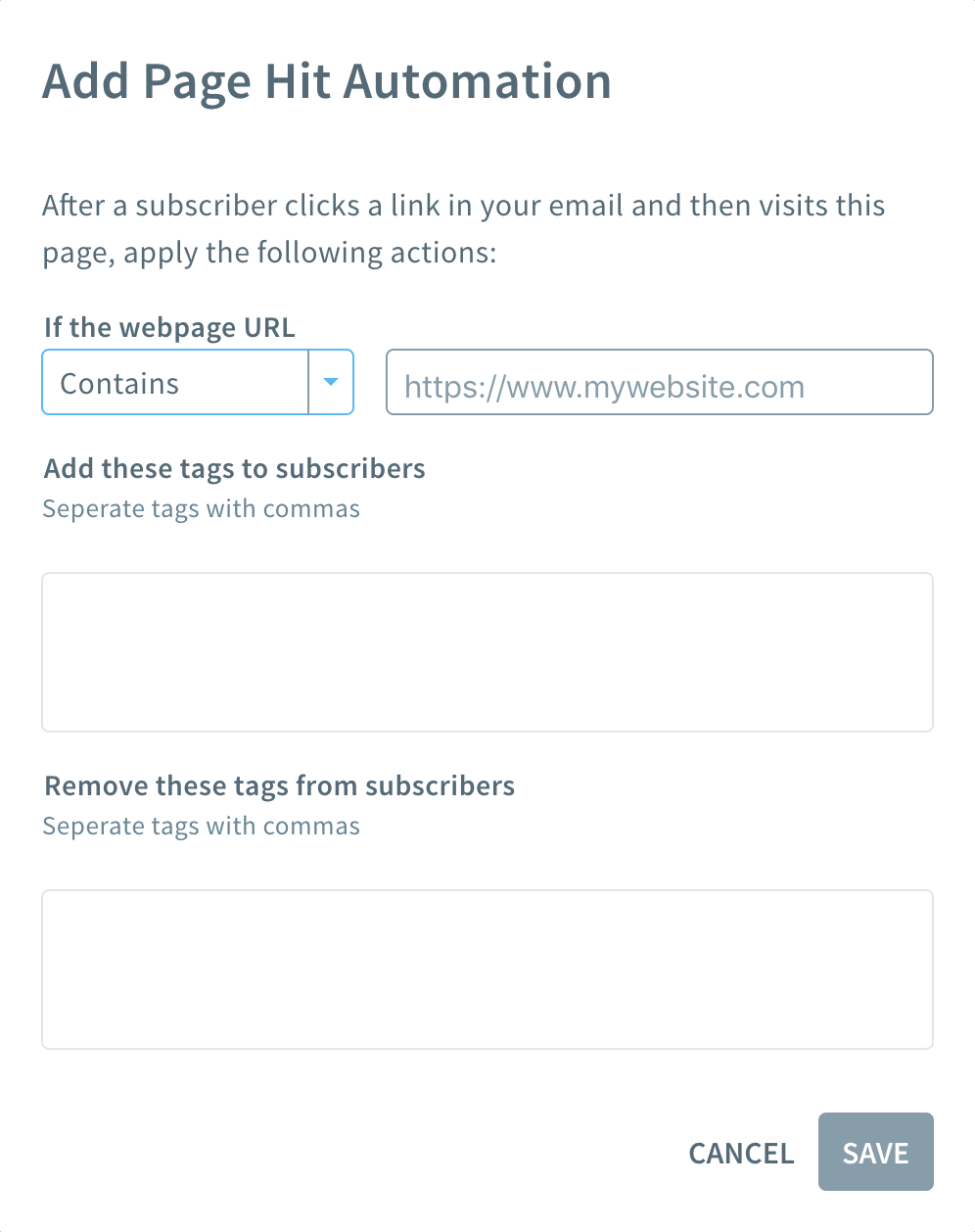 Pro tip: If you’re using AWeber’s landing pages, event tracking is built in. Create segments of subscribers who have visited or not visited specific pages on your site, and send tailored broadcasts or triggers campaigns to those subscribers. Want to learn why subscribers aren’t making it through the sales funnel? Create a segment of subscribers who visit the first page of your funnel, but not the next one. Send them a broadcast or trigger an automated campaign to invite feedback to learn what stopped them from progressing.
Pro tip: If you’re using AWeber’s landing pages, event tracking is built in. Create segments of subscribers who have visited or not visited specific pages on your site, and send tailored broadcasts or triggers campaigns to those subscribers. Want to learn why subscribers aren’t making it through the sales funnel? Create a segment of subscribers who visit the first page of your funnel, but not the next one. Send them a broadcast or trigger an automated campaign to invite feedback to learn what stopped them from progressing.
12. Send emails to new subscribers or customers.
Automated welcome emails are great for engaging your new subscribers. But you can also create segments of new subscribers and send targeted broadcasts to invite them to new-customer events, webinars, and more.
13. Send emails to long-time subscribers or customers.
According to Motista, customers who form an emotional connection with your business have over 300% higher lifetime value than those who don’t. Reward your most loyal subscribers. Create a segment of long-time subscribers and thank them for their loyalty. Offer them VIP perks, invite them to special loyalty events, get to know them, and gather feedback from them.
14. Send emails based on survey results.
Gathering feedback is critical to any business, entrepreneur, or creator. Survey your audience regularly, and create segments of subscribers who rated you or your products favorably, as well as unfavorably. Follow up with them by sending an email to thank them for their feedback and to gain more insight from their input.15. Send different emails to customers and potential buyers.
By segmenting subscribers based on whether or not they’re a current customer, you can target your promotional messages to include more relevant content. Use customer segmentation to separate your customers and potential clients into separate groups you can speak to differently. Instead of sending an email to existing customers and asking them to purchase your product or service, you can speak more to their loyalty and promote advocacy and ongoing interaction.16. Send emails about products based on potential buyers’ gender.
Personalizing the product suggestions for each subscriber can help convert them into customers. For instance, if you’re a retailer that sells clothing products by gender, simply tag subscribers based on their preferences and create segments of customers who are interested in each of these types of products. Then personalize your emails with relevant products based on their gender choice. Use dynamic email content to display the most relevant products for your potential buyer.4 bonus ecommerce segmentation strategies
1. Send emails based on products customers purchase.
By segmenting your customers based on the products they purchased, you’re able to tailor your emails to invite feedback or reviews on those products. You can also send promotional emails to upsell them on upgrades, cross-sell related products or services, and encourage repeat sales.2. Send emails based on products potential buyers left in their shopping cart.
Create a segment of subscribers who left something in their shopping cart. You can send an automated cart abandonment campaign to let them know they left something in their cart and encourage them to come back to complete their purchase. Consider offering them a discount or other incentive to entice them to click through and complete their purchase.3. Send emails based on products potential buyers expressed interest in, but didn’t buy.
Perhaps someone clicked a link in your email to check out your product or service, but didn’t make the purchase. Create a segment of these subscribers and send them an email asking for feedback on their experience. Was there something about the product or service they didn’t like?4. Send emails to subscribers with a minimum purchase amount or purchase price range.
Want to connect with your high-value customers? Create a segment of customers who have purchased your highest-value products. Perhaps send them a thank you email, or offer them VIP perks. Use AWeber’s sales tracking feature to track who makes a purchase after clicking a link to your product or service in your email. Then create a segment of customers who purchased a product with a minimum purchase price or within a price range.Start tagging subscribers today.
Not sure if you want to send targeted emails right now? You can always start tagging subscribers now in case you want to do so later. Add tags to your sign up form or landing page to ensure every subscriber gets it when they sign up. If you have multiple sign up forms or landing pages on one list, for example, this will allow you to know exactly where your subscribers came from. Plus, if you decide you want to send subscribers that signed up for your checklist an invite to a webinar on the same topic, you can do so with ease. Haven’t been tagging subscribers and want to go back and tag them anyway? Search for subscribers using the ad tracking code associated with your AWeber sign up form, or the “Add URL” for your landing page, and bulk apply a tag.Segment subscribers. Send more relevant emails.
Sending targeted emails to subscriber segments is a proven way to improve your email engagement and ROI. So what are you waiting for? This post only listed some of the many ways in which you can segment your list, but if you have other plans to segment subscribers, we’d love to hear about them in the comments below!The post 16 Ways Email Segmentation Can Boost Subscriber Engagement + 4 Bonus Ecommerce Segments appeared first on AWeber.
from AWeber https://ift.tt/2nAQuDI
via
No comments